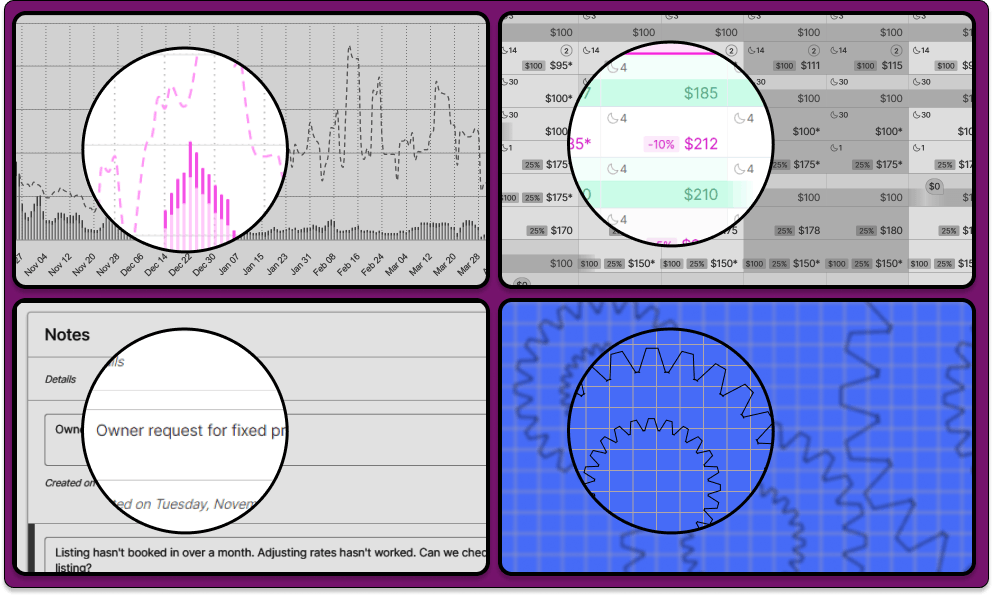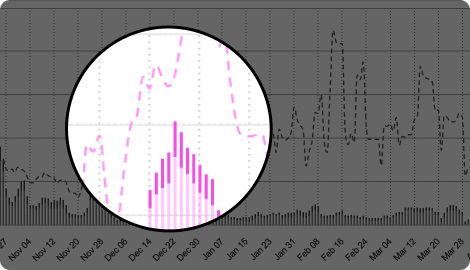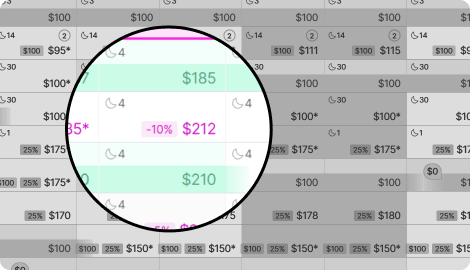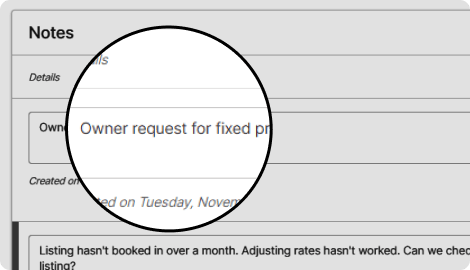Introduction
Whether you're a seasoned Revenue Manager of 10 years or someone recently taking on the role for your team, everyone can benefit from implementing what we describe as "Active Revenue Management."
Active Revenue Management is the practical application of Revenue Management (RM) principles and techniques. It's a hands-on approach to optimizing revenue through continuous monitoring, analysis, and strategy adjustment based on real-time data and market conditions.
The passive "set it and forget it" mentality has limits - regardless of portfolio size or technology stack. For example, automated pricing engines are not yet at the point where they can understand each unique owner you serve. Or, how you might want to adjust your strategy based on something that has happened in your business. Or, how much risk you might want to take for the next two weeks, based on a big booking you just got.
Therefore, we believe that every property manager or accommodations business can benefit from having team members implement revenue practices in their daily, weekly, or monthly routines.
As with learning any new concept, the topics explored in this guide shouldn't simply be read, but are instead designed to be actively applied to your specific situation.
Therefore, if you have currently leverage any pricing or Revenue Management Software (RMS) we'd encourage you to leverage it as you read this guide.
And, while many of the images we include in this guide are from Wheelhouse, the concepts we teach here are going to be applicable to almost any RMS.
Further, if you don't yet have an RMS, our team has decided to make many of the tools detailed in this guide free, so you can improve the foundations of your portfolio immediately.
So, take your time, have fun, and if a particular section resonates with you, take time to apply those concepts to your portfolio for a few weeks as you navigate through the guide.
Content:
To provide you with a focused and actionable outline for your Revenue Management responsibilities, we've organized this course into four chapters that build progressively on each concept.








